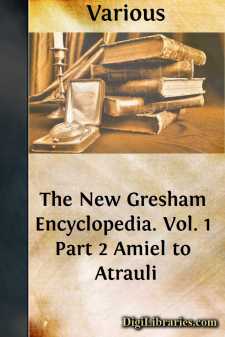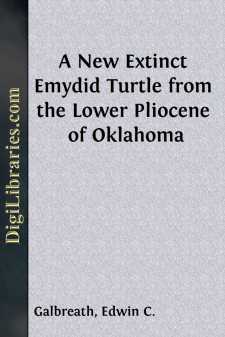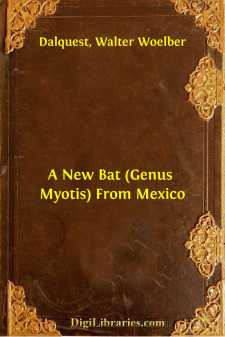Fiction
- Action & Adventure 180
- Biographical 15
- Christian 59
- Classics
- Coming of Age 5
- Contemporary Women 3
- Erotica 8
- Espionage/Intrigue 12
- Fairy Tales, Folklore & Mythology 236
- Family Life 169
- Fantasy 117
- Gay 1
- General 596
- Ghost 32
- Historical 808
- Horror 43
- Humorous 160
- Jewish 25
- Legal 4
- Medical 22
- Mystery & Detective 315
- Political 49
- Psychological 41
- Religious 64
- Romance 159
- Sagas 11
- Science Fiction 730
- Sea Stories 113
- Short Stories (single author) 537
- Sports 10
- Suspense 1
- Technological 8
- Thrillers 2
- Urban Life 31
- Visionary & Metaphysical 1
- War & Military 173
- Westerns 199
Classics Books
Sort by:
by:
Various
CONSONANTS Of the consonants, b, d, f, h, j, k, l, m, n, ng, p, sh, t, v, z, always have their common English sounds, when used to transliterate foreign words. The letter c is not used by itself in re-writing for pronunciation, s or k being used instead. The only consonantal symbols, therefore, that require explanation are the following:— ch is always as in rich. d, nearly as th in this = Sp. d...
more...
by:
Robert B. Finley
The extensive collection of Mexican mammals made by Mr. J. R. Alcorn for the University of Kansas Museum of Natural History contains fourteen piñon mice from lava rocks eight miles northeast of the city of Durango, Mexico. These mice are all much darker than the piñon mice, Peromyscus truei gentilis, of adjoining areas in Durango and Zacatecas and show a superficial resemblance to the widespread P....
more...
by:
Various
VOWELS ÃÂ, as in fate, or in bare. ä, as in alms, Fr. âme, Ger. Bahn = á of Indian names. aÃâ¢, the same sound short or medium, as in Fr. bal, Ger. Mann. a, as in fat. a¨, as in fall. a, obscure, as in rural, similar to u in but, Ãâ in her: common in Indian names. Ãâ, as in me = i in machine. e, as in met. Ãâ, as in her. ë, as in pine, or as ei in...
more...
A slab of shale obtained in 1955 by Mr. Russell R. Camp from a Pennsylvanian lagoon-deposit in Anderson County, Kansas, has yielded in the laboratory a skeleton of the small amphibian Hesperoherpeton garnettense Peabody (1958). This skeleton provides new and surprising information not available from the holotype, No. 9976 K. U., which consisted only of a scapulocoracoid, neural arch, and rib fragment....
more...
In studying the kinds of mammals known from Kansas, I had occasion to examine a series of Perognathus flavus from the western part of the state. Comparisons of these specimens with topotypes of named subspecies revealed that the specimens from Kansas belong to a heretofore undescribed subspecies which ranges through western Nebraska, eastern Colorado, western Kansas, and western Oklahoma. This...
more...
In the summer of 1946 a party from the University of Kansas Museum of Natural History visited exposures of the Laverne formation in Beaver County, Oklahoma, at the invitation of Dr. Stuart Schoff of the United States Geological Survey. When examining the marl beds an Emydid turtle was discovered which appears to be an unnamed species of the genus Chrysemys. A description of the new species follows....
more...
PREFACE. Having formerly occupied my thoughts on the subject of promoting the knowledge and practice of religion among the Negroes in the West Indies, I was naturally led to inquire into the means, which had been successfully adopted in the catholic islands. I traced them to the enthusiastic labours of the clergy in general, particularly the Jesuits. The conduct of the fathers of that society in South...
more...
by:
J. Knox Jones
In the autumn of 1952, I obtained a southern bog lemming, Synaptomys cooperi, at Rock Creek State Fish Hatchery, Dundy County, in extreme southwestern Nebraska. This locality of record is the westernmost for the species in North America. Subsequently, I reported this specimen in the literature (Univ. Kansas Publ., Mus. Nat. Hist., 7:486, 1954), provisionally assigning it to Synaptomys cooperi gossii,...
more...
I Hilltop School closed its fall term with just ninety-five students; it opened again two weeks later, on the third of January, with ninety-six; and thereby hangs this tale. Kenneth Garwood had been booked for Hilltop in the autumn, but circumstances had interfered with the family's plans. Instead he journeyed to Moritzville on the afternoon of the day preceding the commencement of the new term, a...
more...
While one of us (Dalquest) was in a dugout canoe that was being paddled up a small unnamed tributary of the Rio Coatzacoalcos, through dense jungle, he grasped a decayed and termite damaged tree-trunk projecting approximately three feet above the surface of the water to steady the canoe. At that instant two bats were detected in one of the many small holes in the trunk, which was eight to nine inches...
more...











